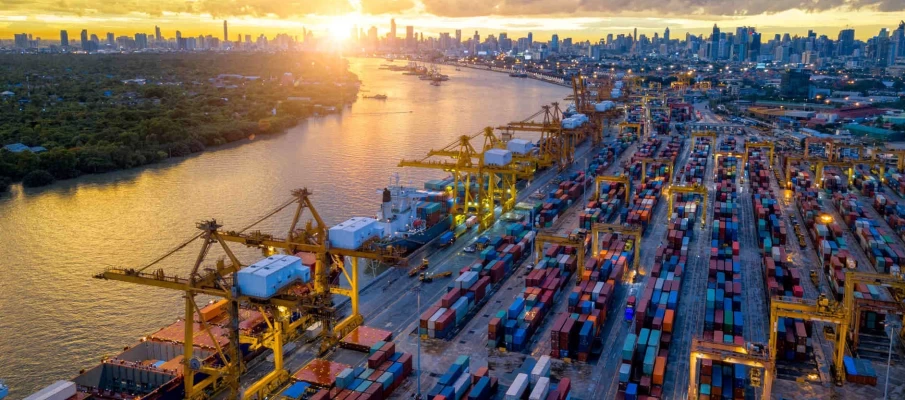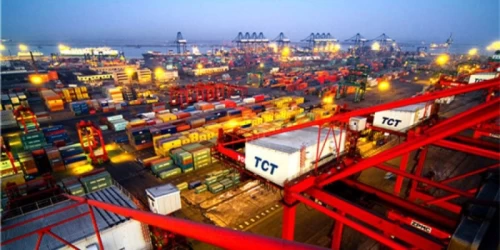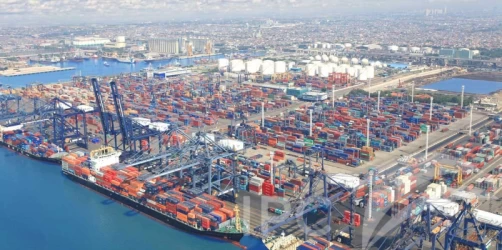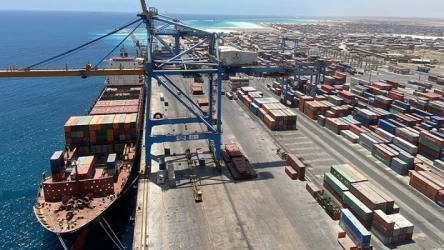Sea Freight in Bangkok Port
Bangkok Port, also known as Khlong Toei Port, is a significant hub for sea freight in Thailand. Located on the Chao Phraya River in the Khlong Toei District of Bangkok, it serves as a crucial gateway for international trade. Operated by the Port Authority of Thailand, Bangkok Port has a rich history and continues to play a vital role in the country’s logistics and transportation network.
Historical Background
The construction of Bangkok Port began in 1938, following the Siamese revolution in 1932. The port was initially developed to replace the traditional method of transferring cargo from ship to ship in the harbor bays of Ko Sechang and Bangkok. Despite interruptions during World War II, the port was completed in 1947 with the help of a loan from the World Bank. Over the years, the port has undergone several expansions to accommodate growing traffic and improve its infrastructure.
Strategic Importance
Bangkok Port’s strategic location makes it a pivotal point for sea freight in Southeast Asia. It connects Thailand to major shipping lanes and ports across the region, facilitating the movement of goods and commodities. The port’s inland location, however, limits access to ships of 12,000 deadweight tones or less and not longer than 172 meters.
Facilities and Services
Bangkok Port offers a range of facilities and services to support sea freight operations. These include:
- Container Terminals: The port has dedicated terminals for handling containerized cargo, with facilities for both Full Container Loads (FCL) and Less than Container Loads (LCL).
- Conventional Quay: For loading and unloading non-containerized cargo.
- Reefer Containers: Temperature-controlled containers for perishable goods.
- Bulk Shipment: Facilities for handling bulk cargo, including hazardous materials.
Economic Impact
Sea freight through Bangkok Port is a cornerstone of Thailand’s economy. The port handles a significant portion of the country’s imports and exports, contributing to the overall trade volume. In the first eight months of the 2010 fiscal year, the port handled approximately 11.9 million tones of cargo, accounting for about 22% of the total cargo volume of Thailand’s international ports. Despite the construction of the Port of Laem Chabang, which has taken over some of the cargo volume, Bangkok Port remains a vital player in the logistics sector.
Challenges and Future Prospects
While Bangkok Port has been instrumental in facilitating sea freight, it faces several challenges. The port’s inland location restricts the size of vessels that can dock, and there have been ongoing efforts to improve infrastructure and capacity. The development of Laem Chabang Port has alleviated some of the pressure, but Bangkok Port continues to adapt to the evolving demands of international trade.
Looking ahead, Bangkok Port is poised to maintain its importance in Thailand’s sea freight landscape. Continued investments in infrastructure, technology, and services will be crucial in ensuring the port’s competitiveness and efficiency. As global trade dynamics shift, Bangkok Port’s role as a gateway to Southeast Asia will remain significant.
Conclusion Sea Freight in Bangkok Port
Bangkok Port’s contribution to sea freight in Thailand is undeniable. With its strategic location, comprehensive facilities, and historical significance, the port continues to be a key player in the region’s logistics and transportation network. As it navigates challenges and embraces future opportunities, Bangkok Port will undoubtedly remain a cornerstone of Thailand’s maritime trade.
Is there anything specific you would like to know more about or any other port you are interested in?











